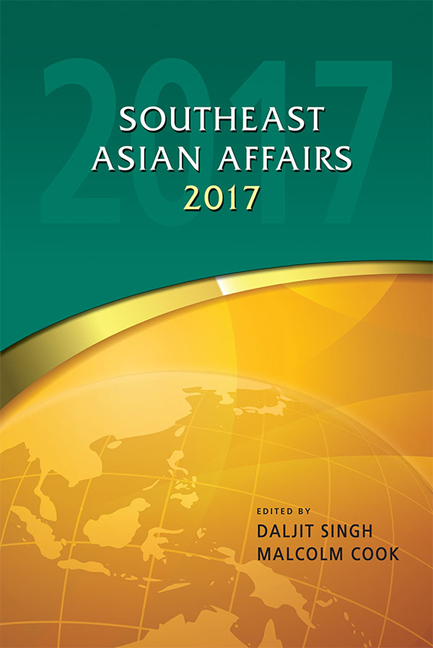Regime Renewal in Laos: The Tenth Congress of the Lao People's Revolutionary Party
from LAOS
Published online by Cambridge University Press: 12 January 2018
Summary
The year 2016 was a crucial one in Laos. According to an established five-yearly cycle, the year was punctuated by a series of key political events, foremost among them the Tenth Congress of the ruling Lao People's Revolutionary Party (LPRP). As on past occasions, the Tenth Party Congress took stock of the country's political and economic performance over the previous five years and adopted the country's next five-year National Socio-Economic Development Plan. Most importantly, it also elected the new Party Central Committee (PCC), the party's main decisionmaking body, together with the Politburo, PCC Secretariat, and Secretary-General. The congress was followed in March by elections for the National Assembly, which then approved party nominations for the President and Prime Minister, who in turn appointed a new cabinet. Throughout this process, Laos occupied the chair of ASEAN, just its second time in the role, and in September played host to U.S. President Barack Obama, the first sitting U.S. President to visit the country, for the East Asia Summit.
While all these events were important, most consequential was the process of party renewal that culminated with the congress. Given the LPRP's grip on political power and the control its leaders exercise over Laos’ rich reserves of natural resources — the main source of the country's rapid economic growth since the early 2000s — LPRP congresses represent critical moments of leadership renewal and transition. Even by these standards, the 2016 congress was particularly significant given the expectation that around half the positions in the eleven-member Politburo would change hands. With old age finally catching up with the revolutionary generation, most anticipated changes were due to retirement. At the top of the list was party Secretary-General and State President, Choummaly Sayasone, and several of his ageing Politburo colleagues who seemed likely to follow.
The stakes were raised further by a plane crash in May 2014, which had taken the lives of another four high-ranking members of the PCC.
- Type
- Chapter
- Information
- Southeast Asian Affairs 2017 , pp. 179 - 200Publisher: ISEAS–Yusof Ishak InstitutePrint publication year: 2017

